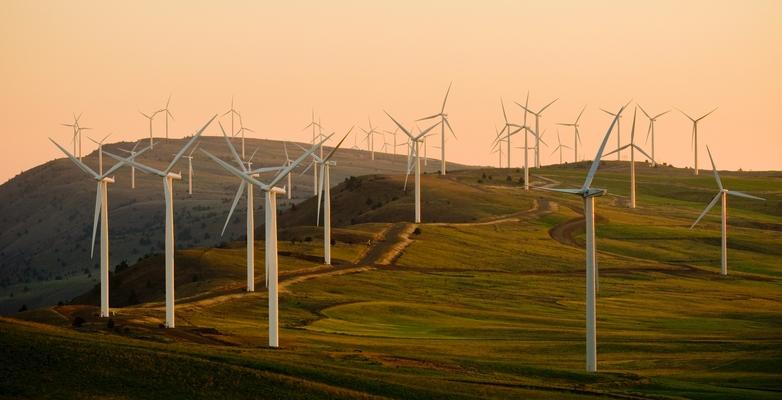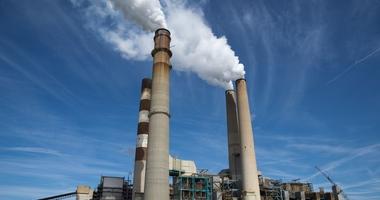
Tripling Renewables Is Critical for COP 28 – But It's Not Enough
7 min read
Call it the curse of the climate movement. The world's two biggest greenhouse gas emitters – the US and China – recently announced they'll both accelerate the expansion of clean energy domestically and support efforts to triple renewable capacity and double energy efficiency globally by 2030.
But instead of shouting the news from every rooftop and social media platform about what the deal will do, we're here to tell you what it won't: Commit each country to phasing out all fossil fuels.
By any objective measure, the deal is an important one. On paper, it creates real momentum for a global agreement to triple renewable capacity at the upcoming COP 28 climate talks in Dubai, a stated goal of COP President Dr. Sultan Al Jaber.
Critically, it explicitly calls out boosting renewables to speed up “the substitution for coal, oil and gas.” (From a climate perspective, adding new renewable capacity only really matters if it retiring existing dirty coal, gas, and oil facilities or preventing new ones. More on that later.)
So why can't we just take the win and call it good?
The Clock Is Ticking
One big reason is time. Specifically, the lack of it.
As a new report from the UN highlights, the world is on the way to a terrifying 3 degrees Celsius of warming – and that's if countries actually meet their current Paris Agreement commitments to reduce emissions. And notably, few are even doing that.
Three degrees may sound like a small number, but it's double the warming of the 1.5 degrees limit scientists have warned as the danger line for humanity. Every fraction of a degree north invites yet more devastation.
As the UN underscores, we know what 1.5 degrees looks like. This year, a combination of relentlessly rising emissions and El Niño temporarily brought the planet over 1.5 degrees, creating what is certain to be the hottest year on record and unleashing record-breaking and lethal heat, rainfall, storms, droughts, and more across the planet.
Unless we see a massive course correction with countries racing to get on the path to net zero and slashing emissions by 42% this decade, the reprieve may be temporary. After all, none of the G20 countries that together account for 76% emissions are on a path to reach net zero by 2050. With global emissions hitting new heights in 2022, we need to massive systems change this decade to have even a fighting chance of net zero and 1.5 degrees, with few sectors well advanced according to a new report from the Systems Change Lab. And the clock is ticking.
Why True Net Zero Matters
Buried in the bad news is a note of hope. The future is still a choice. Or to put it another way, we can still stop global warming.
That's the remarkable finding from the International Panel on Climate Change's latest mega-report. As renowned climate scientist Michael Mann points out drawing on the report, once we reach true net zero, warming could stop in as little as three to five years.
Think of true net zero as the planet's emergency brake on warming. How bad climate change is – and what kind of tomorrow we give future generations – depends on how much warming we've seen when we get there. It may not be perfect, but it means our future is in our hands.
In practice, true net zero means getting emissions from all sectors down to the absolute minimum. There will be a few carbon-intensive sectors with few current solutions at scale, such as concrete, steel, and fertilizer production that may require some forms of carbon capture technologies to contain unavoidable emissions. But to keep warming in check, the vast majority of emissions from other sectors have to get as close to zero as possible.
The good news is that for the majority of polluting sectors, the technologies to do it already exist. The International Energy Agency (IEA) determined that nearly half of the necessary emissions reductions to reach net zero emissions by 2050 can be achieved using technologies in the prototype or demonstration phases and most of the technologies for the necessary emissions reductions through 2030 are already in use.
Tripling Renewables Won't Get Us to True Net Zero
The principles of net zero economics are not complicated. The US and China's commitment to tripling renewables can be a vital step forward, but only if it goes hand in hand with retiring oil, coal, and gas. Fast and fairly. Simply building more renewable capacity will do little to keep temperatures in check if we keep sending millions of tons of greenhouse gases into the atmosphere.
Which is exactly what's on the cards. According to the UN’s 2023 Production Gap Report, governments are effectively planning to blow by 1.5 °C, producing more than 200% of the oil, coal, and gas by 2030 required to keep within our remaining carbon budge.
In fact, it finds that coal production is slated to increase until 2030 and until at least 2050 for oil and gas production. A study by Urgewald found that 31 countries still have plans to increase coal production. If they all come to fruition, it would raise global coal production by 35%. And the real kicker? None of the major fossil fuel producing countries have committed to reducing coal, oil, and gas production to the levels necessary to hold warming to 1.5 degrees. In fact, this year’s COP President Sultan Al Jaber has said that the oil and gas industry would need to invest over $600 billion each year until 2030 to meet expected demand.
Phasing Out All Fossil Fuels Is the Only Way to Go
In the most famous of the paradoxes created by the Greek philosopher Zeno of Elea, a journey is imagined where every step covered half the distance to the destination, drawing closer every time but never reaching the goal. So close, and yet so far.
We find ourselves in analogous territory today, with moves like a commitment to triple renewables globally bringing us huge steps closer to net zero by midcentury and holding warming to 1.5 degrees but not quite meeting it.
What can? Phasing out all fossil fuels. And doing it as fast and fairly as possible.
The fight for an agreement to do just that is poised to be one of the key issues at COP 28. But as yet, the most commonsense solution to the climate crisis does not even appear on the summit agenda.
What you'll likely hear instead from petrostates and their allies is a push to "phase down" fossil fuels. Much hangs on the choice of preposition and if "phasing down" feels imprecise (i.e., How much? How quickly), that's exactly the point.
In addition, you'll likely hear calls to phase down "unabated" fossil fuels. The term “unabated 'refers to fossil fuels whose planet-warming emissions are allowed to enter the atmosphere, rather than being caught through technologies such as carbon capture systems.'”
Fossil fuel companies and petrostates love these systems because it shifts the focus away from burning their products and onto the emissions they create, as if the two could be divorced. "Fight emissions, not oil companies," has effectively become the PR rallying cry for the industry ahead of COP 28. Ignoring the fact this makes as much sense as talking about breathing independent of oxygen, carbon capture and storage systems also have the problem of being unproven and expensive.
This reality has not stopped the fossil fuel industry from going all in, at least in its marketing. As Occidental Petroleum CEO Vicki Hollub said, oil companies need to remove as much carbon as they emit “if they want to be the last producer standing in the world.” And you better believe they intend to produce for as long as they possibly can.
The bottom line here is that a commitment to phase down or phase out “unabated” fossil fuels is no commitment to phaseout at all.
The First Step in Phasing Out: Ending Fossil Subsidies
We have the tools to phase out fossil fuels by turning to proven and cost-effective solutions such as solar, wind, and energy storage. At COP 28 and beyond, a commitment to tripling renewables has to be the first step in phasing out fossil fuels.
Shifting from dirty fossil fuels to clean energy isn't just the right choice – it's increasingly the most cost-effective one. Fossil fuels may look cheap, but that's in large part due to the massive government subsidies that help cover not only the investments of production, but the health and reconstruction costs they bring.
The International Monetary Fund (IMF) found that explicit fossil fuel subsidies more than doubled in the last two years to $1.3 trillion in 2022. When other factors such as health and environmental costs are considered, an additional $5 trillion in implicit subsides must be considered. And the IMF warns that these implicit subsidies are projected to grow in developing countries. This is unacceptable.
That’s why we’re calling on leaders of the G20 group of major economies to end all subsidies for fossil fuel companies making billions driving climate devastation.
It's the critical first step in phasing out fossil fuels. And a first step to a better future for all of us.




